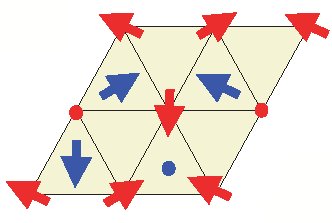 Neutron and X-ray diffraction study of the broken symmetry phase transition in solid deuterium
Neutron and X-ray diffraction study of the broken symmetry phase transition in solid deuterium
 The solid hydrogen compounds D2, HD and H2 remain quantum molecular solids up to pressures in the 100 GPa range. A remarkable macroscopic consequence is the existence of a pressure-induced broken symmetry phase transition, in which the molecules go from a spherical rotational state to an anisotropic rotational state. Theoretical understanding of the broken symmetry phase structure remains controversial, despite numerous studies. Some open questions concern the existence of long- or short-range orientational order; whether a strong isotopic shift on the transition pressure should be assigned to the nuclear zero-point motion or to quantum localization; and whether the structures are cubic, hexagonal or orthorhombic. Here we present experimental data on the structure of the broken symmetry phase in solid D2, obtained by a combination of neutron and X-ray diffraction up to 60 GPa. Our data are incompatible with orthorhombic structures predicted by recent theoretical works. We find that the broken symmetry phase structure is incommensurate with local orientational order, being similar to that found in metastable cubic para-D2.
The associated publication in "Nature" : I. Goncharenko and P. Loubeyre, Nature 435, 1206-1209 (30 June 2005).
The solid hydrogen compounds D2, HD and H2 remain quantum molecular solids up to pressures in the 100 GPa range. A remarkable macroscopic consequence is the existence of a pressure-induced broken symmetry phase transition, in which the molecules go from a spherical rotational state to an anisotropic rotational state. Theoretical understanding of the broken symmetry phase structure remains controversial, despite numerous studies. Some open questions concern the existence of long- or short-range orientational order; whether a strong isotopic shift on the transition pressure should be assigned to the nuclear zero-point motion or to quantum localization; and whether the structures are cubic, hexagonal or orthorhombic. Here we present experimental data on the structure of the broken symmetry phase in solid D2, obtained by a combination of neutron and X-ray diffraction up to 60 GPa. Our data are incompatible with orthorhombic structures predicted by recent theoretical works. We find that the broken symmetry phase structure is incommensurate with local orientational order, being similar to that found in metastable cubic para-D2.
The associated publication in "Nature" : I. Goncharenko and P. Loubeyre, Nature 435, 1206-1209 (30 June 2005).
igoncharenko, 2005-07-01 00:00:00










